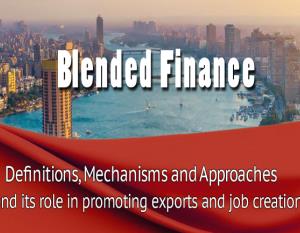Blended Finance - Catalyzing Exports and Job Creation

Blended finance, an innovative approach to development financing, has gained significant traction in recent years. This article explores the fundamentals of blended finance, including its definitions, mechanisms, and approaches, and highlights its role in promoting exports and job creation.
Definition and Mechanisms
Blended finance refers to the strategic combination of public, private, and philanthropic funds to mobilize additional private capital for investment in sustainable development. It aims to bridge the financing gap by leveraging public or philanthropic funds to de-risk investments, thus making them more attractive to private sector investors. Key mechanisms of blended finance include risk-sharing instruments, such as guarantees and insurance; concessional financing, such as low-interest loans and grants; and technical assistance to build capacity and improve investment readiness.
Approaches to Blended Finance
There are several approaches to implementing blended finance, including:
- Parallel co-financing: This involves public, private, and philanthropic entities investing separately in a project, with each party bearing its own risk and rewards.
- Co-mingling of funds: In this approach, multiple investors pool their resources in a single investment vehicle, sharing risks and rewards proportionally.
- Layered funds: This structure allocates risks and returns among different investors according to their risk appetite, with junior or more risk-tolerant investors providing a buffer for senior or more risk-averse investors.
Promoting Exports and Job Creation
Blended finance plays a crucial role in promoting exports and job creation through the following ways:
- Filling financing gaps: Blended finance can help address the funding gaps faced by small and medium enterprises (SMEs), which often struggle to access affordable financing. By unlocking capital for SMEs, blended finance enables them to expand, innovate, and enter new markets, ultimately driving export growth.
- Risk mitigation: Blended finance instruments, such as guarantees and insurance, can mitigate risks associated with cross-border trade and investment, encouraging private sector participation in export-oriented projects.
- Leveraging international networks: Blended finance partnerships can connect local businesses with international investors and development agencies, providing them with valuable market insights and access to global supply chains.
- Job creation: By channeling investments into high-impact sectors, such as infrastructure, agriculture, and clean energy, blended finance supports the creation of quality jobs, both directly and indirectly. These investments not only generate employment opportunities but also stimulate economic growth and improve the overall business environment.
Real-World Examples
Blended finance has been successfully implemented in various regions to promote exports and job creation. For example, the African Development Bank's (AfDB) Trade Finance Program uses blended finance to support African SMEs' access to trade finance, enabling them to participate in regional and global trade. Similarly, the Global SME Finance Facility, a partnership between the International Finance Corporation, the UK's Department for International Development, and the Netherlands' Ministry of Foreign Affairs, leverages blended finance to help SMEs in emerging markets access finance, promoting job creation and economic growth.
In conclusion, blended finance presents a powerful tool for catalyzing private sector investment in sustainable development. By leveraging its various mechanisms and approaches, blended finance can play a vital role in promoting exports and job creation, ultimately contributing to inclusive and sustainable growth.

